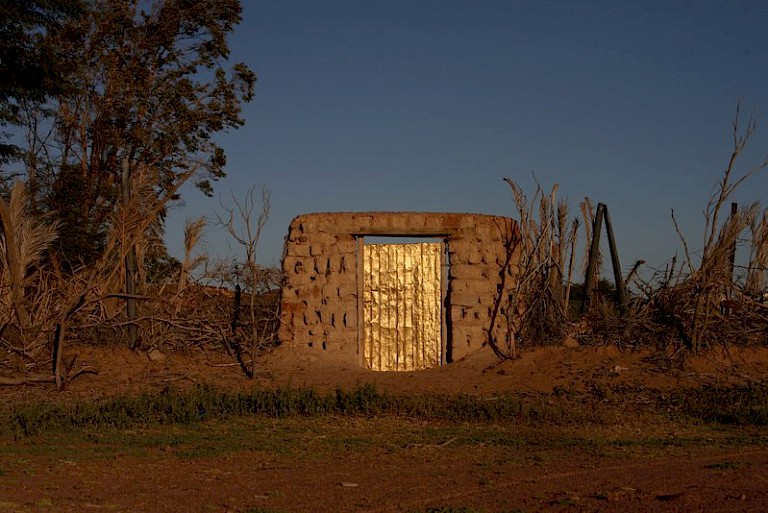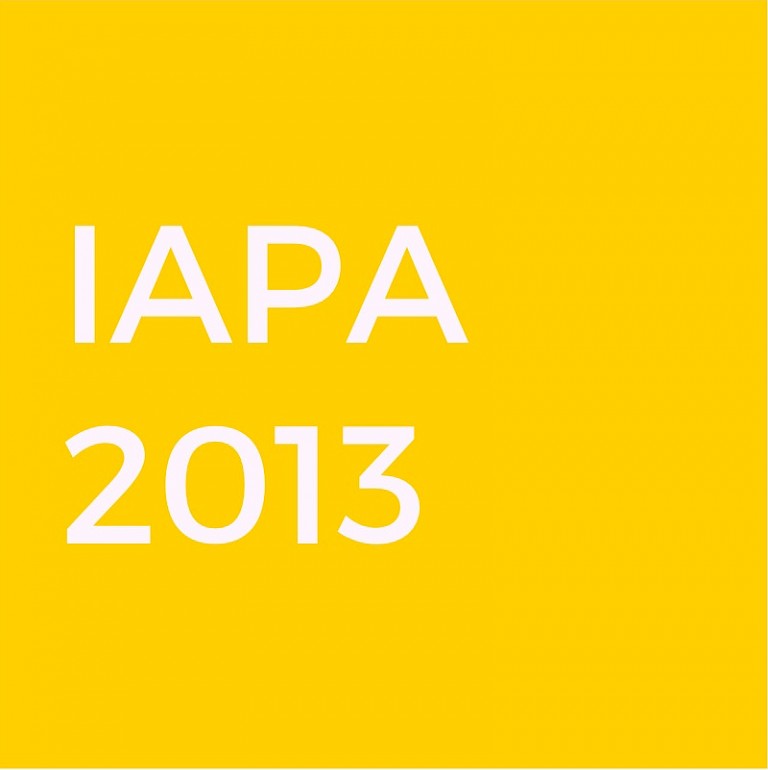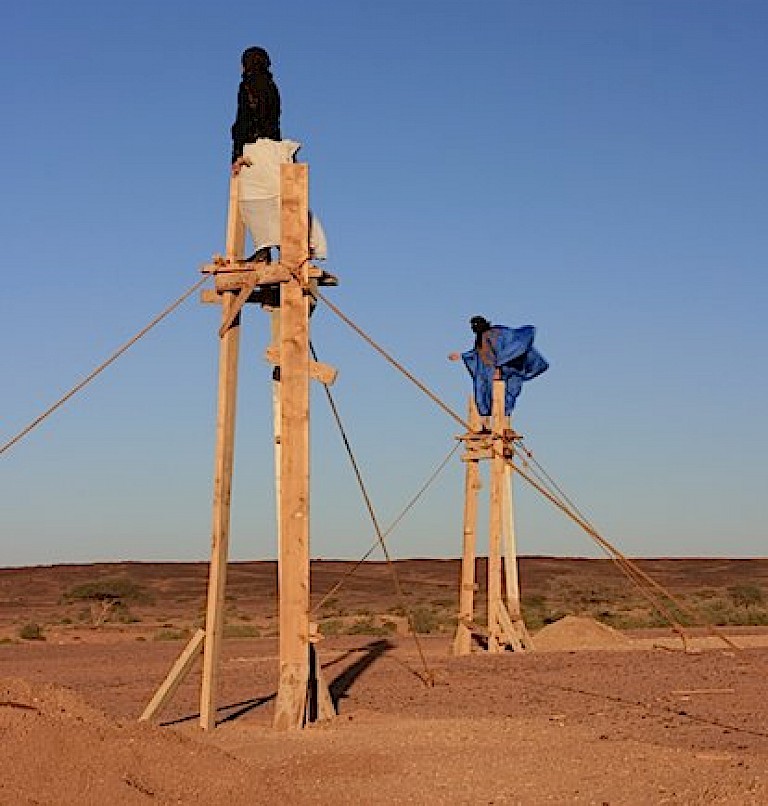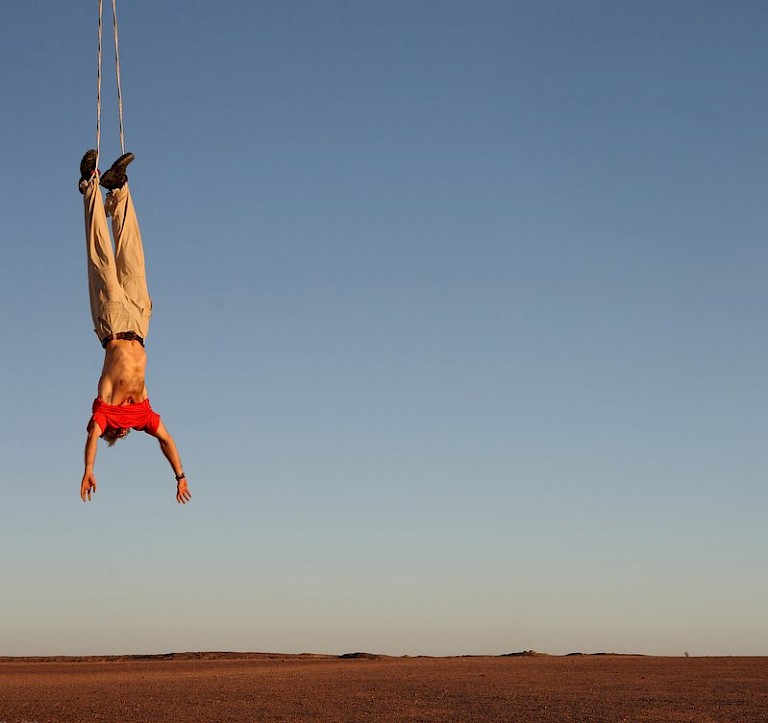



At the beginning this idea was considered doomed, but since its first edition ARTifariti has achieved great success, thanks to the intense energy of the place and of the local people involved. Today, curated by Isidro López-Aparicio, ARTifariti connects Tifariti to the rest of the world.
ARTifariti is organized by the Sahrawi Arab Democratic Republic (SADR) Ministry of Culture and the Association of Friendship with the Sahrawi People in Seville (Asociación de Amistad con el Pueblo Saharaui de Sevilla - AAPSS). Through an open call, projects proposed by national and international artists are selected by an international jury composed of professionals like Juan Antonio Álvarez Reyes, Abidin Bucharaya, Sema D’Acosta, Cristina Garcés Hoyos, Isidro López-Aparicio, Fernando Peraita, Pamen Pereira and Esther Regueira.
The main criteria for the selection is based on how each project contributes to the repercussion that the festival can have in the occidental world, generates a political debate about the place and its current situation, and uses local found materials and native resources such as sand, stones, animal bones, recycled materials, construction steel, concrete blocks, bomb shells and other war remnants, local fabrics from jaimas, and tinted melfas.
What all the projects have in common is that they are selected and produced with the aim to help Western Sahara people to show the conflict to the occidental world, and to try to arrive to what the United Nations agreed on more than thirty years ago: its auto-determination (real placemaking). That’s why the type of works produced is very wide but all of them are social commitments.
(Isidro López-Aparicio, March 2012, interviewed by the researcher)
The works produced, some permanent other temporary, become part of the cultural heritage of Tifariti and are exhibited outdoors at the Museum of Tifariti. The artists deal with the human and social situation of Western Sahara in different ways. Some of them denounce the visible injustices, like the Collective of Argelian Artists (Argel), which painted Reborn the ruins in 2008 on the walls of the Hospital of Tifariti, which had been bombed by Morocco during the war and had remained damaged for thirty years. Others underlined the invisible consequences of the war. Isidro López-Aparicio, for example, underlined the isolation of the Sahariwis with the symbolic action Aislamiento. Isolation (2008-2009). The performance consisted of a man who spent 24 hours in a hole excavated in the sand of the desert, and afterward constructed a platform and remained at the top in a strong wind and finally atomized water into it.
Images from Aislamiento. Isolation have been widely reproduced, and built a concept of placemaking through the identification of the Saharawi’s situation. They have even become the “Western Sahara images” used by famous people connected with the project, like Manu Chao and Javier Bardén and part of a travel set, which offers tourists the opportunity to experience the loneliness and the purity of the desert by staying in the hole and in the towers, something one can only experience there. The travel brochures are a great opportunity and advertisement aiming to inform all the world about a conflict that no one talks about it.
Other projects worked on a metaphorical level, like the huge sculpture Trojan Horse made in 2008 by Mexican artist Rolando de la Rosa. The horse’s head was made with a bomb that was destroyed by Land Mine Action in Tifariti. The artwork moved from the museum and is currently set near by the 2,700 km wall, planted with three million mines, that divides Western Sahara in two and has split the Sahrawi population between occupation and exile for the last 35 years.
Before ARTifariti, the Western Sahara was absolutely forgotten by the occidental world. Thanks to this project it became a place recognized and indentified. Through art, information about the conflict in the Western Sahara has been spread to the rest of the world.
The commitment of artists to the project is another important aspect of ARTifariti, which has created new facilities and benefits for Saharawi artists. Every year they are eager to participate to ARTifariti projects, to develop their own ideas which evolve continuously thanks to contact with the public spaces’ processes and interaction with international artists.
All copyright belongs to Shanghai Academy of Fine Arts, Shanghai University.



